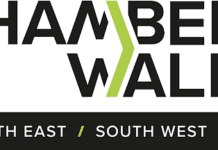Bridging loans are short-term financial products that can help home buyers finance a prospective property purchase before waiting for their current property to sell. These bridging loans come in various types, including first, second, and third charge loans. It’s easy to be confused about these subtypes and if you’re unsure, a conversation with a bridging loan specialist can help. This article’s a good reference point to understand the nuances between the different bridging loan charges.
What is a bridging loan charge?
The main objective of a bridging loan or bridging finance is to bridge the gap between two different transactions. After obtaining the short-term funds, borrowers typically repay it via three different mechanisms: refinancing onto a longer-term mortgage, property sale proceeds, or a major liquidity event. As its name suggests, a bridging loan charge is a bridging loan that has a charge over a property. A charge is an interest in the security of an asset that allows the lender the right to have the asset sold and the revenues applied to the repayment of the loan. A charge is an encumbrance on an asset that does not transfer ownership.
The type of charge they apply, whether first, second, or third, can have several implications for the borrower of a bridging loan and the lender.
Bridging loan lenders will assess the capital requested and categorise it as the first, second, or third depending on whether the borrower has outstanding finance on the property offered as security.
Where a borrower defaults on the loan conditions, such as failing to meet the repayment deadline, the charges give the lender security of knowing they can repossess the property and force a sale to obtain their capital and interest.
First Charge
For finding an online payday loan broker anyone can browse this site of EasyPayDayLoans where users are given a transparent and suitable offer and at the least cost they get help for financial survival
As a borrower, if your bridging loan is of the first charge category, it means you have no other finance against your property and the issuing financial provider would be the beneficiary for the first payment should you default on your loan. First charges are considered senior deb and any subsequent debt would be junior to this charge.
Several scenarios exist where a first charge loan may be applicable. For instance, if you pay off your mortgage with the bridging loan or purchase your property outrightly, your loan will fall under the first charge category. Another instance where a first charge loan can apply is purchasing at an auction. You will be issued a first charge bridging loan if you repay the loan through a property sale or remortgaging.
Second Charge
Second charge bridging loans apply if you secure the loan against an already mortgaged property. In the case of default, the property sale proceeds will first have to clear your mortgage before the bridging loan. With the second charge bridging loans, UK law treats the first secured loan, the mortgage, as the repayment priority.
Third Charge
First and second-charge loans are the most common types available on the financial market. However, some lenders can apply for a third-charge loan or even a fourth or fifth charge in rare circumstances. Third charge bridging loans apply when the borrower has already secured a first and second charge loan with their property.
This bridging loan type requires the proceeds of a property sale after repossession to repay the loan only after the first and second charge loans have been repaid. Third-charge bridging loan providers charge significantly higher interest rates than a first or second charge as the risk of non-repayment after default is considerably higher.
Regardless of the charge type, borrowers will only be able to obtain up to the amount of equity available in the property. So for example, if a property is worth £100,000 and only has 50% of equity remaining due to a £50,000 outstanding first charge bridging loan or mortgage, then the maximum a borrower could request is the remaining equity of £50,000. However lenders are highly unlikely to offer a loan to value (LTV) ratio of 100%.
Typically the LTV ratio is 80% for a residential property or 65% for a commercial property. This is becauset property markets fluctuate and should the borrower default, the lender wants to ensure that they can recoup their capital and interest charges quickly.
This means they will want to sell the property as cheaply as legally possible to encourage a quick sale. Not only this, the lender will also incur further costs due to default so the gross loan size will actually increase where a borrower defaults. They need to build that into the LTV ratio.
Finally, if there is a market downturn such as happened in 2008 during the great recession, then the lender needs to know their capital in the property is covered even after any decline in the property value.
Generally, it pays to speak with a financial broker or advisor who are experts on which type of charge is right for your circumstance and the limits of any bridging loan you achieve when applying for first, second, or third charge bridging loans.

|
| Help keep news FREE for our readersSupporting your local community newspaper/online news outlet is crucial now more than ever. If you believe in independent journalism,then consider making a valuable contribution by making a one-time or monthly donation. We operate in rural areas where providing unbiased news can be challenging. |
























